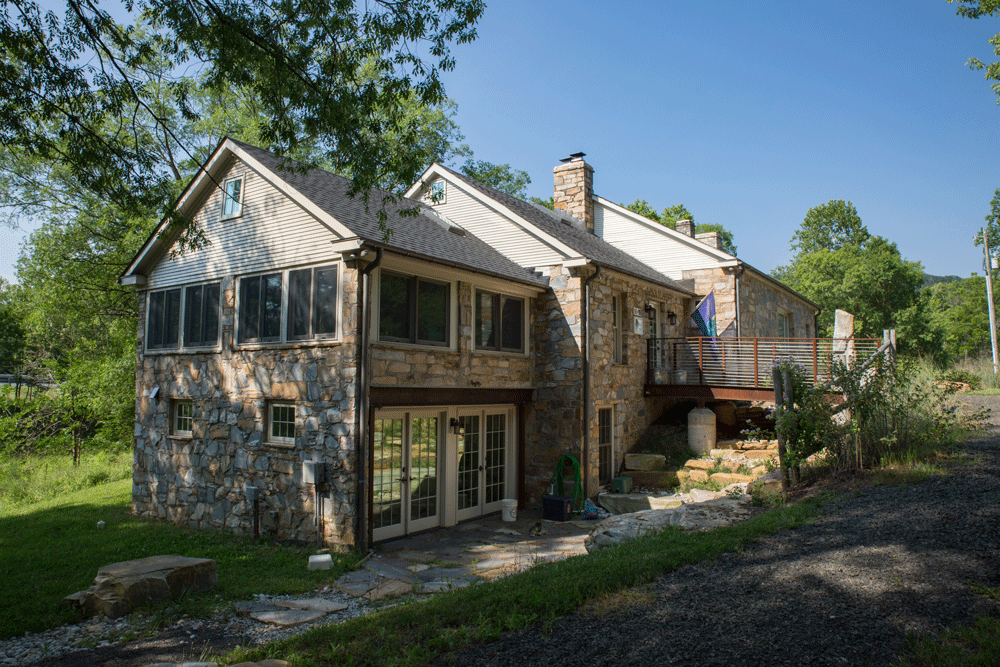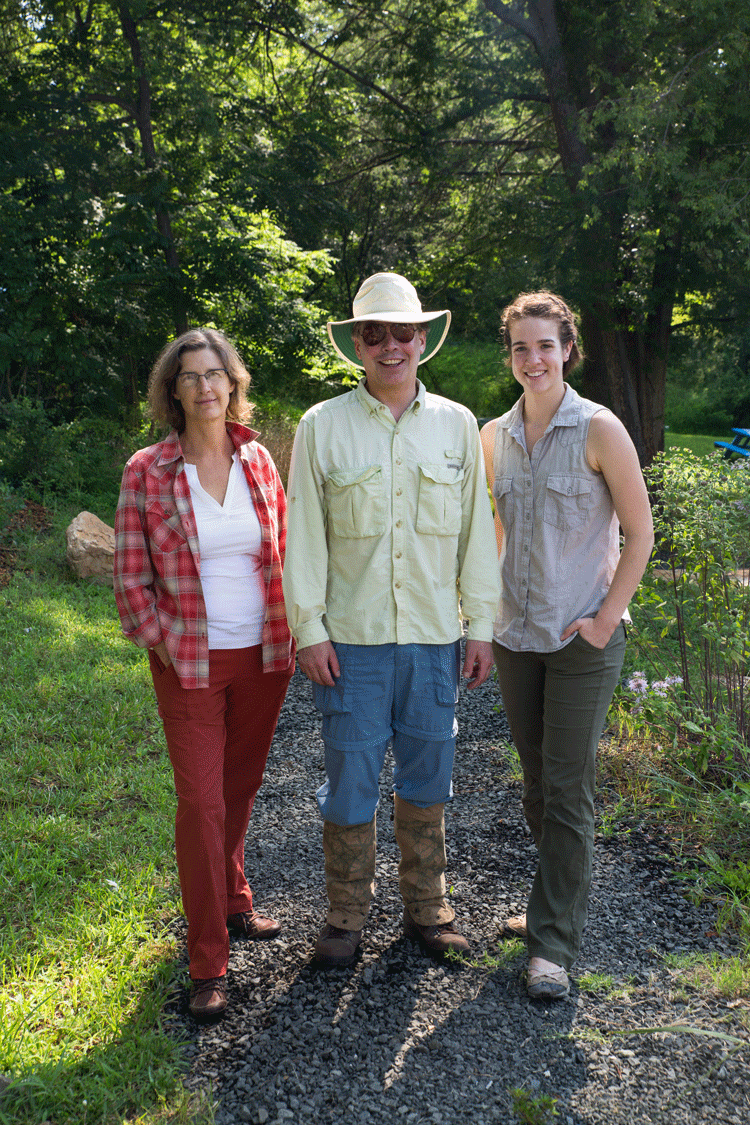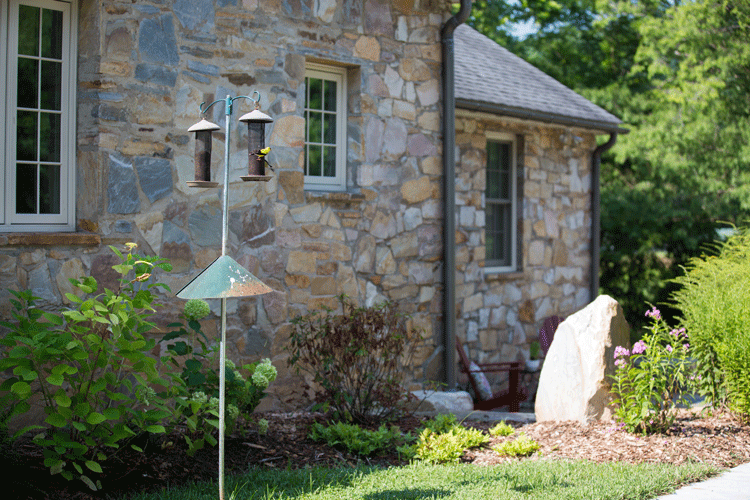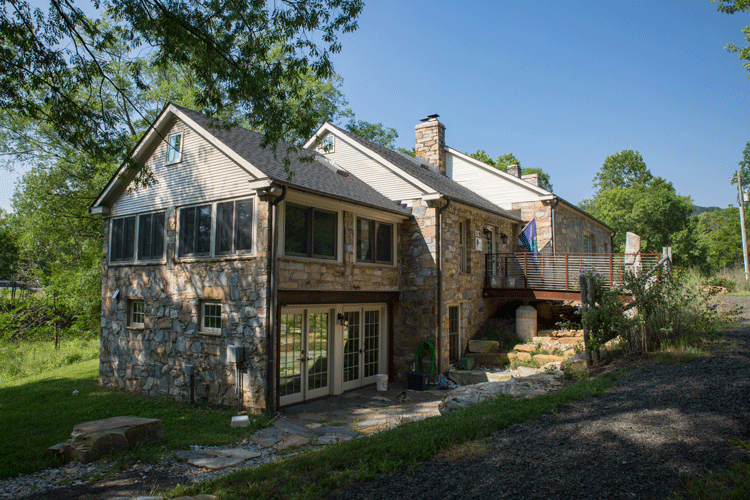Beetles, Bats & Biologists at Bull Run Mountains Conservancy

Story and photos by Callie Broaddus
A community developer, a horse trainer, a military historian, a landscape architect, a doctor and a biologist walk into a bar…
Okay, they didn’t. But when you look down the list of professions that make up the board and staff at the Bull Run Mountains Conservancy, it’s more likely to call to mind the popular joke structure than a synergistic team of environmentalists.
If you grew up in the area, you’ve probably heard of the organization, which operates from their “Mountain House” on Beverley Mill Drive in Broad Run. But, if you’re like me — at least until I started researching for this article — you’re just as likely to not know exactly what they do.
“He has an interest and passion and background in science, so he brings rigor to education; it’s not superficial.” -Andrea Currier
Since its inception under the name Friends of Bull Run in 1994, Bull Run Mountains Conservancy has pulled local talent from diverse backgrounds to accomplish its goals of education, research and stewardship. Aside from its board and staff, the group has inspired a much larger pool of passionate and dedicated volunteers who are the arms and legs that give scope to the group’s accomplishments.
At the backbone of the organization’s goals is a commitment to science. So when founding board member and President Andrea Currier brought on biologist Michael Kieffer as executive director 18 years ago, it was a natural fit.

“He’s a dedicated educator,” Currier says. “He has an interest and passion and background in science, so he brings rigor to education; it’s not superficial.”
That much is evident. Kieffer is currently running his 18th series of summer camps, where he teaches kids about the diverse fauna and natural systems that make the Bull Run Mountains so important to science and to the health of our regional ecosystems.
“The education program is tied into the research program, which is all about better stewardship for the land,” says Kieffer.
The research underwritten and supported by the Bull Run Mountains Conservancy and its volunteer base has included multi-year studies and surveys on moths, snakes, beetles, bats, water quality, aquatic life and American Chestnut trees on Bull Run Mountain — which backs up to the organization’s headquarters — and many surrounding areas. They supported ecologist Gary Fleming’s 2001 comprehensive documentation of ecological communities on the preserve, as well as two of Marty Martin’s five-plus decades of rattlesnake research.
These studies are performed in a large part by the Conservancy’s hundreds of steadfast volunteers, who understand that studies that seem narrow — doing a beetle survey, for example — actually provide critical data to analyze the health of the region over time.
Kieffer walks through the thought process behind one such study: “So the beetles. Let’s say the climate keeps changing. Does the beetle fauna here change? Does it diminish? Does it become more of a southern fauna that you’d see farther south? Does the beetle fauna go farther north?”
To the Bull Run Mountains Conservancy, these questions matter. “This is just a teeny pixel point on a huge whole world,” says Kieffer. “But I’d like to think that by doing this and having the volunteers so passionate, and getting the little money to pay these biologists to come out and survey bats or what have you, it’s providing this…at least a pixel point. Without the information, we have nothing.”

Much of the data the Conservancy has gathered is compared to benchmarks from a survey performed by Harry Ardell Allard in the 1930s and 1940s, when the U.S. Department of Agriculture botanist collected close to 15,000 specimens in a 33-square mile area including what is now the Bull Run Mountains Natural Area Preserve, an entity now owned and controlled by the Virginia Outdoors Foundation.
“So you take the bat survey or the beetle survey now, and you flash forward 70 or 80 years. They’re going to look back at this and have a pixel point of real information,” Kieffer explains. “All of a sudden, what’s just inventory now becomes a study later, because you have that inventory work. And that’s what the program’s about. That’s what the kids get.”
Fourteen-year-old Vinny was a camper at the Conservancy’s summer programs and has returned as an intern for the second time. The day’s topic is snakes, building off Martin’s 55 years of research on the Preserve. “Snakes are my favorite,” says Vinny. “A couple times ago, I found a hognose snake!”

The enthusiasm of campers and interns returning year after year, the tens of thousands of hours put in by volunteers to assist with cleanup and research, a diverse and vested board of directors and a successful track record of adhering to the mission are the mark of this grassroots organization.
Looking forward, Currier says, “We continue to offer educational events; we continue to host the public events, trying to educate people on what is a Natural Area Preserve, as opposed to a park, as opposed to a come-one-come-all, as opposed to locking people out. We continue to underwrite science, which we feel keeps us credible, because we don’t want to be ‘lite.’ We want to be substantial and always girded in reality and science.”
For more information on this organization visit brmconservancy.org. ML


